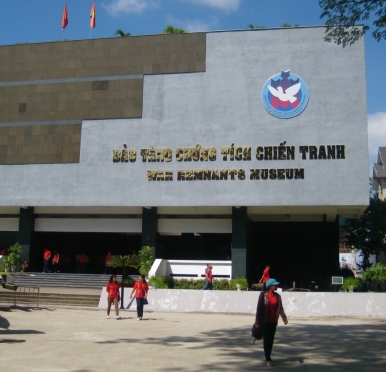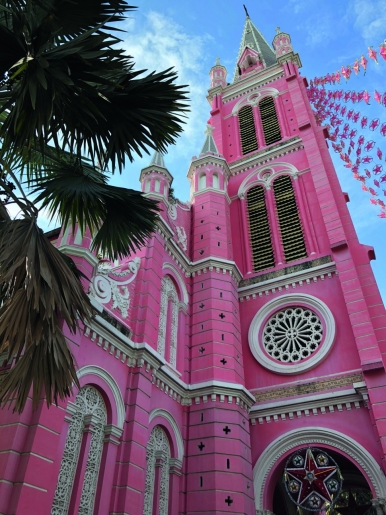Neighbourhoods in HCMC are transforming to respond to the growing spending power of locals and the increase in tourists


Ho Chi Minh City (which locals still call Saigon) is a play of contrasts, blending a bustling mix of the old and the new: renovated colonial villas, countless coffee shops, generations of mom-and-pop storefronts, and recently opened bars and boutiques resting in the shadows of a shimmering skyline of newly minted high-rises.

Most of its 24 districts are seeing the change. It’s in District 3, however, that we see the finest mix of the contemporary and the old, arts and culture, and where you can find some calm from the chaos of the city.
Adjacent to District 1, the more obvious business and retail concentration, District 3 is a quieter alternative preferred by locals.
“District 3 is one of my favourite areas in Saigon and one of my favourite streets is Pham Ngoc Thach. It’s not that there’s a lot on that road, but it is lined with giant trees that make for a perfect walk, ending at the Ho Con Rua (Turtle Lake),” offers local artist Richard Streitmatter-Tran.

In addition to the beautifully dilapidated colonial structures and some of the oldest pagodas in the country, in District 3 you’ll find the Venerable Thich Quang Duc Memorial, the monument dedicated to the monk who set himself on fire in protest of the persecution of Buddhists and the seminal War Remnants Museum, where the American War (as the Vietnamese call it) is chronicled in raw, gory detail. These are all important stops for tourists who want to revisit Vietnam’s recent, turbulent history.
Heaviness aside, “District 3 possesses a distinctive characteristic that represents the daily living culture of Saigon,” says Dàm Vū, a leading Vietnamese architect of the modern yet nostalgic T House building in District 3. “It is considered by the Saigonese as the best place to live in the city, which has been transcribed into an age-old saying every local knows, ‘Eat in District 5, live in District 3, and play in District 1.”
Living in District 3 means “to feel alive,” offers influential gallerist Quynh Pham, whose own Galerie Quynh is just over the border in District 1. “It is the vibrant area of Saigon with an eclectic mix of cultural spaces in renovated villas and hip, young boutiques and cafés.”

One of these cultural spaces Quynh recommends is Salon Saigon. Located in one of Ho Chi Minh City’s historic cul-de-sacs in one of the 1960s homes of former American Ambassador Henry Cabot Lodge Jr, Salon Saigon is a well-appointed townhouse-cum-arts space founded by collector John Tue Nguyen (a sort of Charles Saatchi of the region), who established the space as homage to contemporary Vietnamese art.
His passion for the preservation and promotion of local and internationally based Vietnamese artists and cultural events is levelled in this charming two-storey villa, which doubles as a “salon” for conferences, talks and lectures. Sandrine Llouquet, the French-Vietnamese visual artist, serves as Salon Saigon’s resident curator.
There’s a plethora of tiny boutiques scattered across Ho Chi Minh City selling locally sourced products, much falling in the category of visibly “inspired by”.

Cong Tri, located a block from the War Remnants Museum, on the other hand is an emporium of original designs. This chic standalone boutique from Nguyen Cong Tri, who is recognised as one of Vietnam’s leading designers, is a riot of colourful cocktail and printed day dresses for the growing professional set and for ladies who lunch, and a fierce designer discovery for the discerning tourist.
Meanwhile, hipster designer Vo Thi Li Lam’s celebrity-friendly Lam boutique is located in District 1, but she swears by the calm she finds at La Maison de L’Apothiquaire Spa and Golden Lotus Healing Spa, her two favourite addresses in District 3.
The food culture in Ho Chi Minh is on full display. Food is of cultural pride to the Vietnamese people, and dining means consuming with all five senses. Every other storefront is some form of a dining spot, from street food to vegetarian restaurants and BBQ joints to myriad upscale establishments.

Banh Xeo 46A, located on a narrow passage in front of the iconic Tan Dinh Parish Church (the pink church), offers the best local flavour on our trip. Bánh xèo, literally “sizzling cake”, is a Vietnamese pancake with various meat and vegetable fillings that you assemble with your fingers, rolling the “mini-tacos” and dipping in the tastiest sauce to a finger-licking-good experience.
Other notable mentions in the area are Biogarten Restaurant and Moc Cafe. Biogarten is a proper vegetarian restaurant upstairs with a curated organic supermarket downstairs, while Moc is a quirky fauna-strewn joint teeming with young Saigonese sipping on fresh juices and delicious sandwiches.
To fully capture the sheer scale and impact of Ho Chi Minh City, you’ll need to go high above.
SOHY Sky Lounge & Dining on the 25th floor of the Centec Tower on Nguyen Thi Minh Khai is one of the two current hotspots in the quartier bringing out the hipsters and the elevated tourists to their “futuristic beach resort” theme spot. This trendy perch sports everything from a cigar room to a Champagne garden and a jaw-dropping view.

The perfectly situated five-star boutique Hotel des Arts Saigon M Gallery Collection Hotel is resplendent in its self-described “Indochine Française”. That means an ample display of antiques throughout the 25-storey property that underscores the intertwined history of the two cultures. Its two restaurants, Saigon Kitchen and Café des Beaux Arts, are the closest you’ll get to Michelin-star dining in the city. In fact, the hotel regularly brings in Michelin-rated chefs to show their commitment to the culinary experience.
The spa and the regular jazz crooners are all charming features of the hotel, but it’s the 360-degree view from the pool and the Social Club Rooftop Bar that will take your breath away. Take it all in and ponder what this city may look like in 10 years.
It’s sure to be markedly different.









